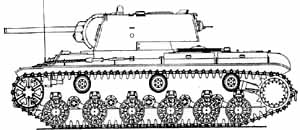
I received two volumes from this series the other day, those on the German Army and the Soviet Army in WWII. Both books are 8" x 10.5", with about 230 pages each and plenty of photos. This is where the similarities end.
The German Army book is written by James Lucas and includes chapters on Army leadership, organization, equipment,uniforms, medals, personal equipment and flags (?!). The chapters on organization and equipment are repeated for different arms of service, e.g., infantry, armor and artillery. Also included are Orders of Battle for 1939, 1940, 1941, 1944 and 1945, and a listing of Waffen SS divisions. It includes a good many photos, many of which I have never seen, and are quite good.
While the table of contents promises great things, the actual contents are pretty superficial. The chapter on German infantry gives a divisional organizations for a 'standard' infantry division, a 1944 pattern infantry division, and a Volksgrenadier division, down to battalion level. But there is no detail below battalion level. Most of the infantry chapter is given over to brief (and I do mean brief) histories of the first 50 infantry divisions. Many of these simply read 'converted to the XX whatever division'. Not terribly informative. More detail is given for the Mountain division and the paratroopers. And, of course, the SS is given more space, both in the text and in the photos, than its relative size in the German Armed Forces would warrant.
The Orders of Battle in the back of the book are a strange mixture, giving the names of Armies and Corps, and only identifying divisions that belong to Panzer corps. The April 1945 OB is more complete, however, with a complete listing of divisions. The chapters on equipment also suffer from a lack of detail, and completeness as well.
The book also suffers from errors of detail, which may or may not be the result of insufficient proof-reading. For example, a photo of the fathers of the blitzkrieg identifies a man in civilian clothes as Guderian, although in fact the man in civilian clothes is seated next to the Panzer general. Another photo identifies an MG 42 light machine gun as an 'M 3' machine gun, which might be OK if they were describing the post-war version, but this one is clearly manned by the Waffen SS.
I suppose the chapters on Medals was included for the benefit of collectors, but they don't go into enough detail for that obsessed crowd. The chapter on Flags and Standards mostly show those used for headquarters types, like the flag for the head of the Luftwaffe, etc. I'm not really sure who needs this information. Certainly I don't have much use for an entire page given over to photos of the Fuhrer's personal flag.
Overall the impression I get from this book is that it tries to include every subject imaginable, but the amount of information on each only scratches the surface. I am afraid that I would have a hard time recommending this book. I much prefer the W.J.K. Davies German Army Handbook, published in the 1970s, which, while lacking the production values of the more recent book, contains a lot more useful information.
In stark contrast to the Lucas book on the German Army is Zaloga and Ness' book on the Red Army. This book limits itself to two topics - organization and weapons. But it is quite thorough in regards to these two subjects. There are chapters on the organization of the Red Army's infantry, artillery, armor, cavalry and airborne/special units. Each traces the changes in organization of major formations through the war, with many full page tables of organization that will tell you, for example, how many sub-machine guns a Rifle Division baker company was authorized (one, if you really must know). This is the kind of hard data that gamers can really use.
The equipment of the armor, artillery and infantry also get their own chapters. Again, these offer an impressive amount of information, including a breakdown of T34 losses by cause for different commands and periods of the war. The least detailed chapter is that on infantry weapons, which offers only general descriptions of the types used. Many photos of major weapon types are included, which are particularly useful for sorting out the vast array of different artillery pieces the Red Army deployed.
I do not hesitate to recommend the Zaloga and Ness book, at least in regards to the two subjects it covers. If you are looking for uniforms, tactics, medals or flags, don't buy it, because these topics are not covered. But the organizational info is a goldmine, and the equipment chapters are also quite useful.
The question now is, what of the rest of the series? Books on the British, American and Japanese armies are also offered by Sutton Publishing (or will be soon), but with the quality of each apparently varying by author, one can only guess at what these might contain. One clue is that the US and UK books are both authored by George Forty, who wrote a US Army Handbook in the early 1980s that was quite good. The Sutton book may be a revised edition of that, or a whole new book. I will report my impression of future volumes when I get my hands on them.
Back to Citadel Spring 1999 Table of Contents
Back to Citadel List of Issues
Back to MagWeb Master Magazine List
© Copyright 1999 by Northwest Historical Miniature Gaming Society
This article appears in MagWeb (Magazine Web) on the Internet World Wide Web. Other military history articles and gaming articles are available at http://www.magweb.com